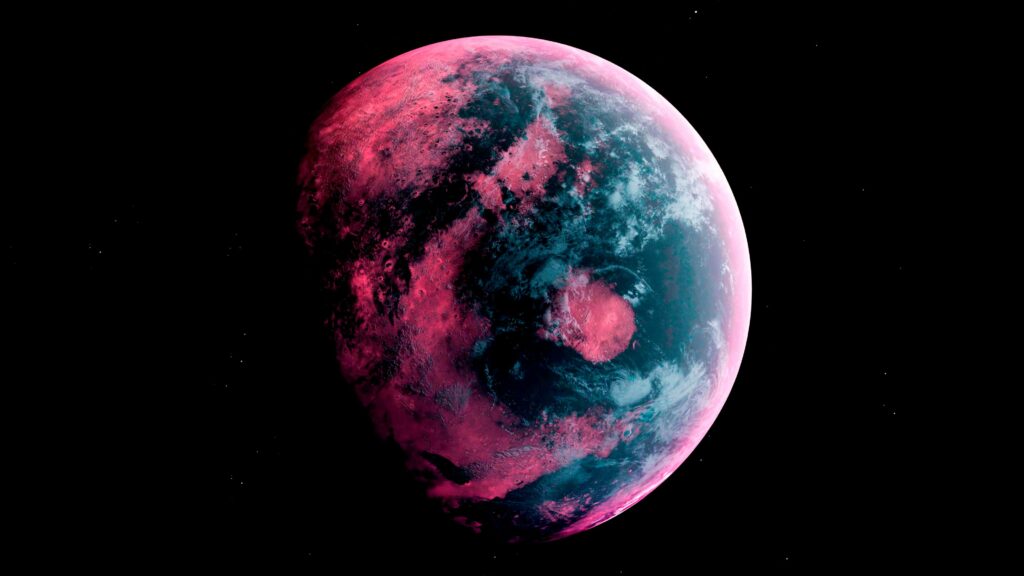Our experts examine the hottest new research
CUTTING EDGE
Super-Earths wreak havoc
Simulations show the common planet type would cause chaos in our Solar System

The more we’ve learned about the planetary systems orbiting other stars in the galaxy, the more we’ve realised just how unusual our own Solar System is. Most exoplanetary systems have very different architectures to our own. The Kepler-11 system, for example, is exceedingly compact, with six planets crammed within the equivalent orbit of Venus. Other systems contain worlds with extremely elliptical orbits – such as HD 20782 b – which indicate significant past effects of gravitational interactions between planets. And one of the most common kinds of exoplanets to turn up in our astronomical searches is not present at all in the Solar System: super-Earths. Super-Earth planets have a mass several times larger than Earth’s but substantially less than ice giants like Uranus and Neptune.
Stephen Kane, in the Department of Earth and Planetary Sciences at the University of California, Riverside, was curious to see how differently our Solar System might have turned out were it to have formed with a super-Earth. He created a series of computer models of the Solar System in its current configuration, and into each dropped a different super-Earth between the orbits of Mars and Jupiter to see what would happen. The hypothetical super-Earths were varied in mass between one and 10 times that of Earth, and with initial orbital distances of between 2 AU and 4 AU. Overall, he simulated thousands of these tweaked Solar Systems, and let each run within the computer for the equivalent of 10 million years.
“Mars’s orbit becomes ever more elliptical as it picks up momentum and is rapidly ejected altogether from the Solar System”
Kane found that the inner, rocky planets were particularly vulnerable to gravitational disruption from a super-Earth companion. For example, with a seven-Earth-mass super-Earth inserted at 2 AU, the orbits of the terrestrial planets quickly become unstable. At 2 AU, the added super-Earth and Mars experience a 2:3 resonance. This means that for every two of the super-Earth’s orbits Mars completes exactly three of its own, and so receives a regular gravitational tug. Mars’s orbit becomes ever more elliptical as the planet picks up momentum and is rapidly ejected altogether from the Solar System. The increasingly unstable orbit of Mars affects both Venus and Earth, which in turn leads to the ejection of Mercury. And as Venus wanders further out from the Sun, and Earth is nudged inwards, the two experience catastrophic close encounters with each other.
If, instead, the seven-Earth-mass super-Earth is placed at 3.8 AU, it experiences orbital resonances with both Jupiter and Saturn, nudging them both into slightly more elliptical orbits. In this case, the super-Earth is itself thrown out of the Solar System, but not before it has shattered the stability of the inner system and triggered a chaotic orbit in Neptune that leads to Uranus being ejected.
Overall, Kane found that the Solar System is largely preserved if a super-Earth were to exist in a narrow range of orbits around 3 AU. But for most of the cases he studied, a super-Earth orbiting between Mars and Jupiter falls into resonance with one or more other planets and acts like a wrecking ball to the stability of the Solar System.
I loved this paper from a gleeful perspective of building toy Solar Systems and watching how catastrophically they break. But there’s a deep relevance to this sort of study too, serving both to improve our understanding of the architectures of exoplanetary systems, and to constrain our theories on how they form.

Prof Lewis Dartnell is an astrobiologist at the University of Westminster
He was reading… The Dynamical Consequences of a Super-Earth in the Solar System by Stephen R Kane
Read it online at: arxiv.org/abs/2302.06641